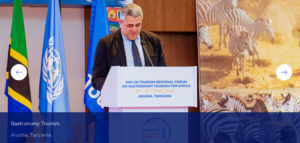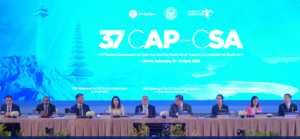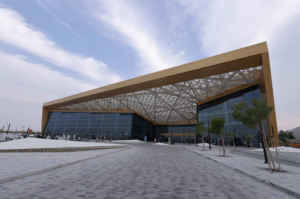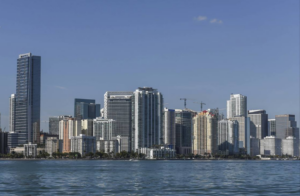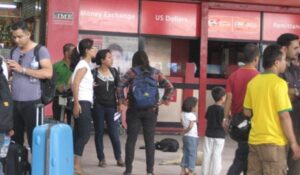IIPT and UNWTO to partner in peace through tourism
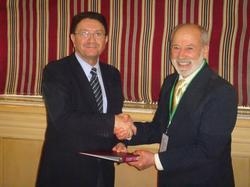
STOWE, Vermont, USA –The International Institute for Peace through Tourism (IIPT) is proud to announce that it has signed a Memorandum of Understanding (MOU) with the World Tourism Organization (UNWTO). The MOU provides for cooperation between UNWTO and IIPT in implementing activities and events related to tourism and peace in response to the needs and interests of UNWTO Member States, the international tourism sector and the international community, and to develop policy recommendations to enhance the role of tourism in the peace building agenda.
IIPT was born in response to global issues of the mid-1980s: increasing East-West tensions, the growing gap between have and have-not regions of the world, a deteriorating environment, loss of bio-diversity, and the peaking of terrorism. It was born in 1986, the UN International Year of Peace, with a vision of travel and tourism becoming the world’s first “Global Peace Industry” – an industry that promotes and supports the belief that every traveler is potentially an “Ambassador for Peace.”
With its first global conference in Vancouver 1988, and since, IIPT has been dedicated to fostering and facilitating a “higher purpose of tourism” – tourism that contributes to international understanding among the diverse peoples and cultures of our global family, international cooperation among nations, an improved quality of environment, preservation of biodiversity, enhancement of cultures and heritage, sustainable development, poverty reduction, and the resolution of conflict – and through these initiatives, help bring about a more peaceful, just, and sustainable world.
UNWTO Secretary-General, Taleb Rifai, emphasized the potential of tourism in peace building and reiterated the important role of IIPT in contributing to a culture of peace.
“Tourism can be one of the most effective tools in peace building, as it brings people from around the world together, allowing them to exchange ideas, beliefs, and different points of view; these exchanges are the very foundation of mutual understanding, tolerance, and human enrichment.”
IIPT Founder and President Louis D’Amore said: “We are most honored to enter into this MOU with the World Tourism Organization. UNWTO has supported the initiatives of IIPT since its founding in 1986 and has been a partner with us in major IIPT conferences and summits beginning with our First Global Conference in Vancouver, on through to our most recent 5th IIPT African Conference in Lusaka, Zambia. We look forward to the opportunities presented by this MOU and to further collaboration with UNWTO in promoting a ‘Culture of Peace through Tourism.’”
IIPT’s vision of peace embraces peace within ourselves; peace with our neighbors in the “global village”; peace with nature; peace with past generations – by honoring the traditions, cultures, and monuments they left as their legacies; peace with future generations – the core essence of sustainable development; and peace with our creator, bringing us full circle back to peace within ourselves.
IIPT achievements have included a number of firsts: first to introduce the concept of Sustainable Tourism Development (Vancouver Conference 1988) – four years prior to the Rio Summit; world’s first Codes of Ethics and Guidelines for Sustainable Tourism (1993) – one year following the Rio Summit; first international study on “Models of Best Practice – Tourism and Environment (1994); and the first legislation of any nation in the world on “Tourism in Support of the UN Millennium Development Goals” as a legacy of the 4th IIPT African Conference, Uganda, 2007.
IIPT conferences have produced a series of declarations including the Amman Declaration on Peace and Tourism officially adopted as a UN document, and most recently the Lusaka Declaration on Tourism and Climate Change, which has been broadly distributed. Other achievements have included broad distribution of the IIPT Credo of the Peaceful Traveler, Ambassador for Peace Awards for outstanding achievements in contributing to a “Culture of Peace through Tourism,” and a series of scholarships awarded to university students writing the best paper on the themes of our various conferences and summits.
Finally, more than 450 Peace Parks have been dedicated in various cities and towns of the world beginning in 1992 with IIPT’s “Peace Parks Across Canada” project commemorating Canada’s 125th anniversary as a nation. Peace Parks have also been dedicated in the United States, Jordan, Scotland, Italy, Greece, Turkey, South Africa, Tanzania, Zambia, Uganda, the Philippines, Thailand, and Jamaica. Noteworthy are Peace Parks at Bethany Beyond the Jordan, site of Christ’s baptism; Pearl Harbor, Hawaii; (UN Secretary General) Dag Hammarskjold Memorial Site, Ndola, Zambia; the Uganda Martyr’s Trail, Uganda; and Victoria Falls, Zambia.
IIPT initiatives have been in support of the UN Decade of Peace and Non-Violence for the Children of the World, UN Millennium Development Goals, and UNWTO Code of Ethics. Uganda was the first country in the world to introduce “Tourism Legislation in Support of the UN Millennium Development Goals” as a legacy of the 4th IIPT African Conference.


